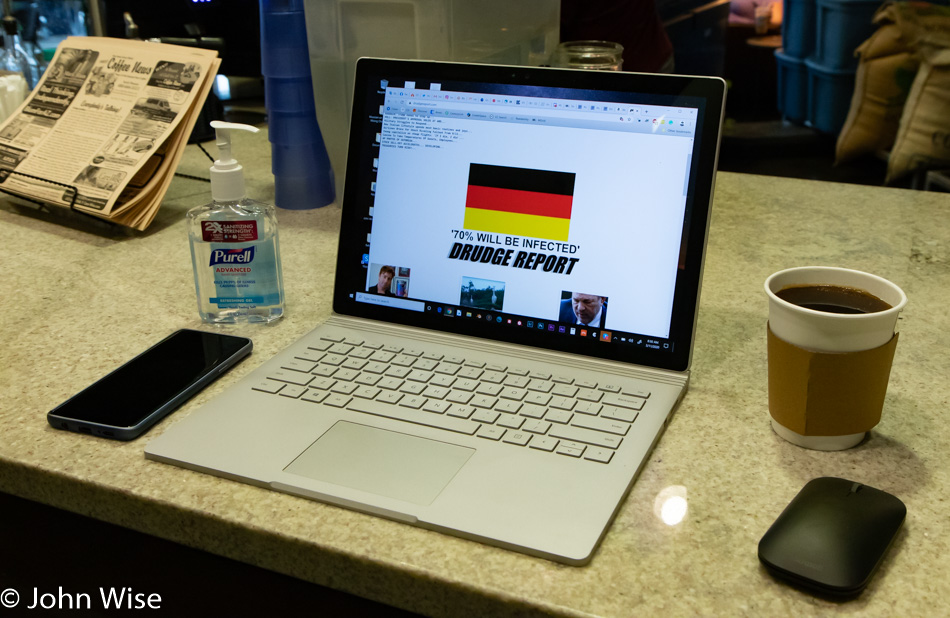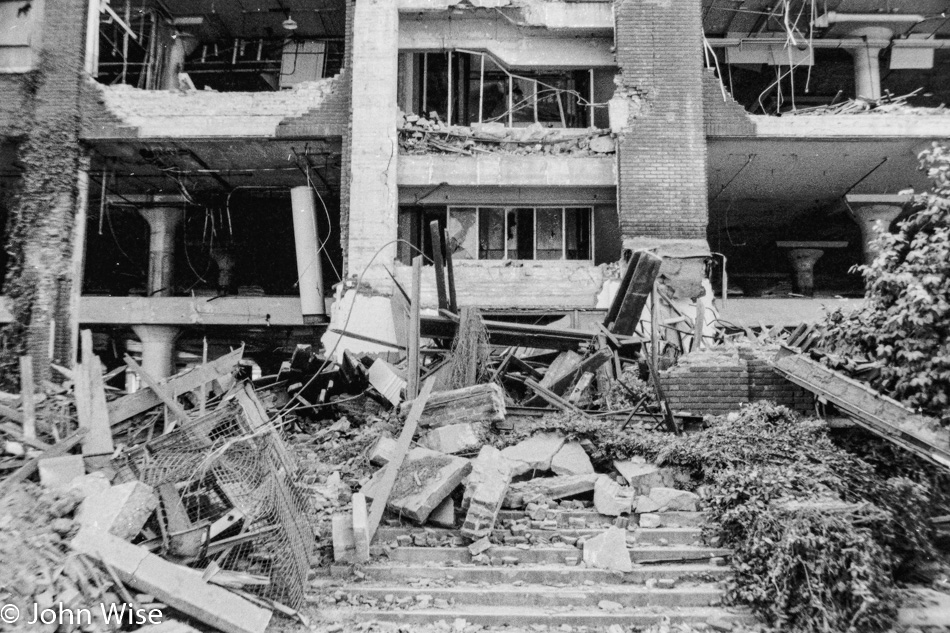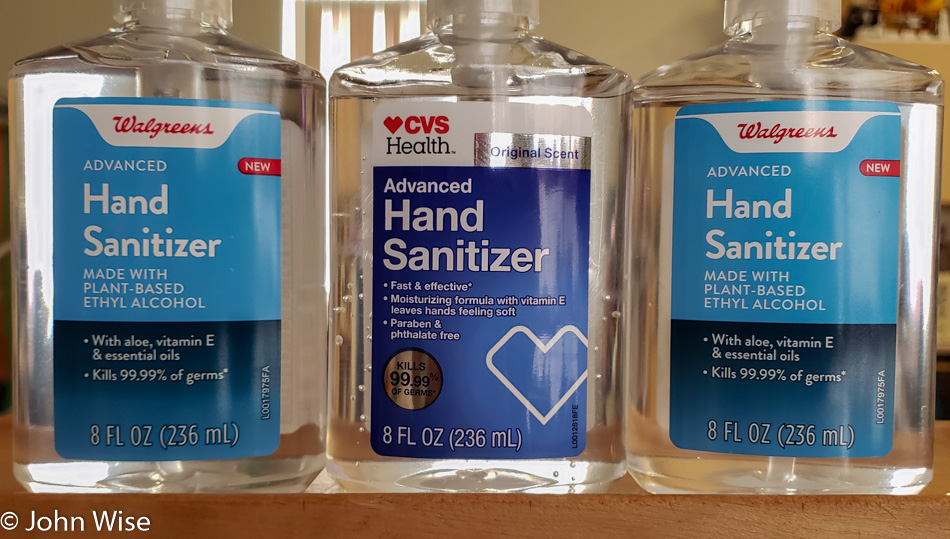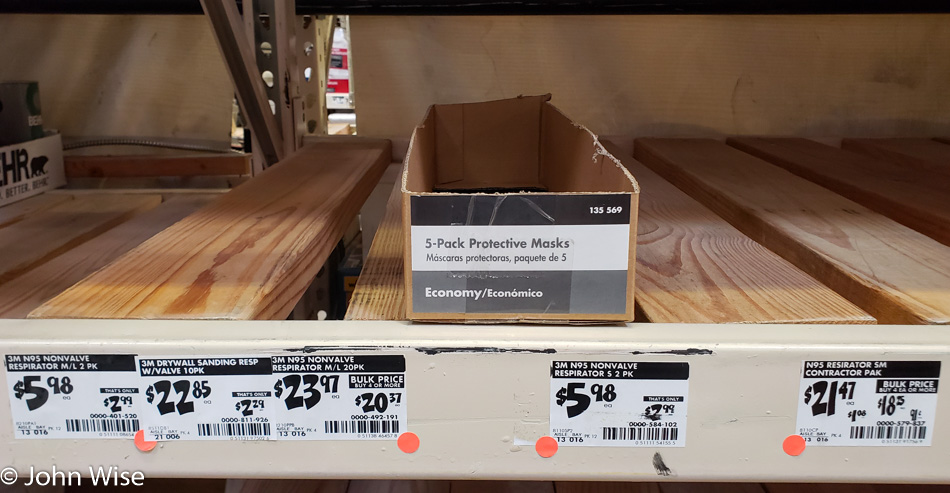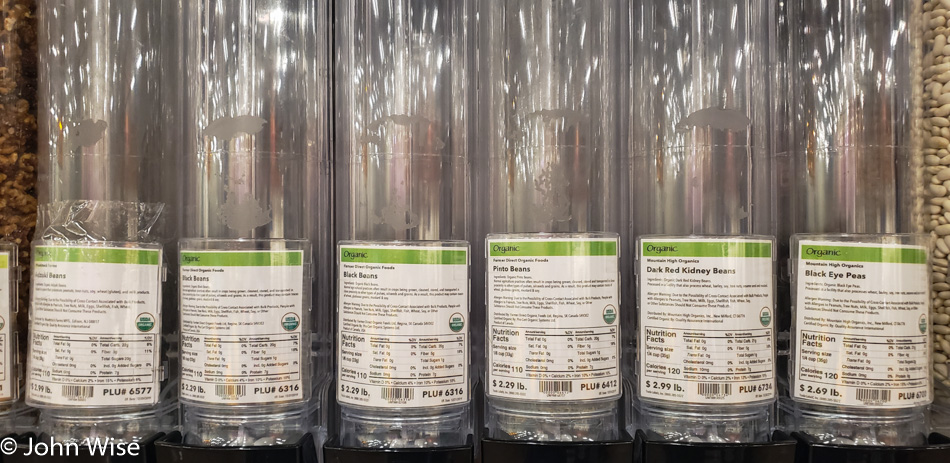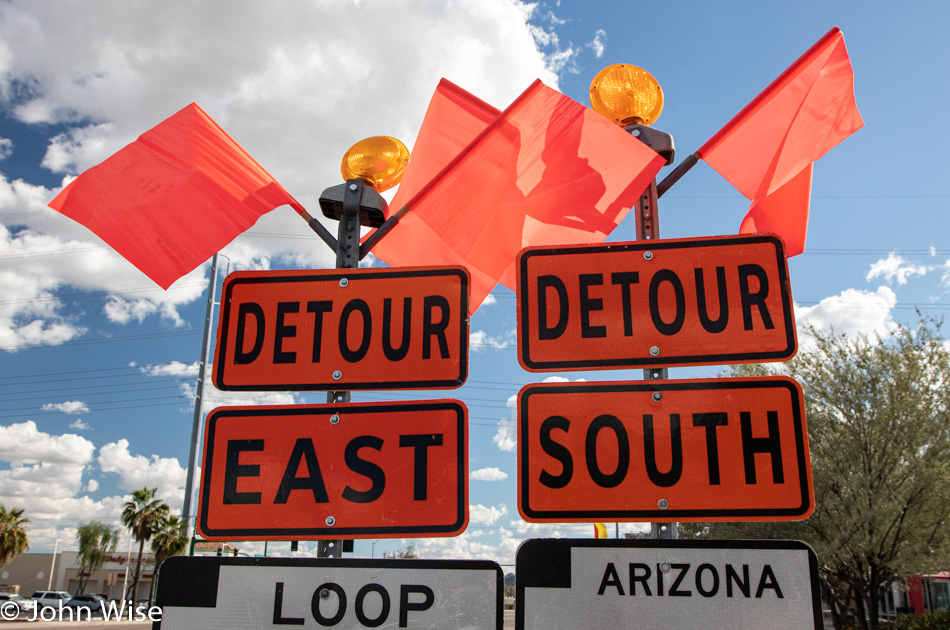
This was supposed to be Day 1 of self-isolation from the COVID-19 virus, but after reading a couple of things today on the Center for Facebook Control site (CFC), I decided my earlier panic shopping wasn’t enough and that we needed more of everything else that we’ve already stockpiled. Of course, toilet paper, pasta, chicken, dried beans, rice, soup, peanut butter, oatmeal, water, sanitizer, and pretty much any other soap or Clorox product is off the list, along with most bread products, frozen veggies, pizza, potatoes, and hamburger. Via the CFC network, I learned that vegan and gluten-free products were readily available, and we’d decided that we seriously needed ziplock plastic bags so we had to break our own quarantine.
I’ll admit that the whole thing was a half-assed attempt anyway: we thought we’d visit a local breakfast place and leave one of the servers a healthy tip as we’d not be back for a couple of weeks, but by 6:30 in the morning we figured we’d beat the crowds by getting out to the store early. Hah! That was a mistake. Fry’s was already out of shopping carts, and only the self-checkout lines were open as they had everyone else restocking shelves from the carnage from the night before. They opened at 5:00 a.m., and by 6:40, when we arrived, the lines were to the back of the store and reportedly 4 hours long. Nope, there’s nothing we needed that badly.
Maybe Safeway is a better bet as it’s the Dasani of grocery stores. Walked right in and easily bought more of the stuff we already had. I’ve got to say that being flexible in what we eat has made our shopping lives during the pandemic much easier. By the way, I don’t know when Dasani became associated with something negative but we’ve seen stories where water is sold out everywhere, except for Dasani. I still wanted a bit more Silk Soy Milk for my sprouted and dehydrated homemade granola (still working through our Y2K supply), so with Safeway sold out, we visited our nearby Albertson’s, where I can rest assured there are no neighbors who’d dare drink almond, cashew, coconut, soy or any other plant-based milk; I scored.
We have one more outing to make to a local Indian store where I need to replenish our spice supply, as these 20-year-old soy chunks likely need some serious seasoning to make them palatable. In nearly celebrating this culinary edgelord status, I should give my wife Caroline a lot of credit as when she went vegetarian 25 years ago; I found it to be a real pain in the ass. Now, today, I’m happy as a vegan clam that we can eat from the fringe and be happy. These days, Caroline is once again an omnivore and certainly loves her pork, but when pressed by the threat of full indulgence or getting by while we live in this self-imposed isolation until it’s forced upon us from outside sources, we know that we’ll be living it up while others are forced to eat toilet paper and Lysol wipes.
Well, turns out, local Indians are not immune to the panic shopping as the Turmeric Cash & Carry was a mob scene and about two hours away from being sold out of most everything. Signs were up everywhere, warning people that NOTHING could be returned. Caroline took a place in the line while I went and grabbed some turmeric, cumin powder and seeds, mustard seeds, coriander powder, some Kala chana, and chana dal. After I got the things I wanted, it was Caroline’s turn to run through the crowded aisles; she returned with snacks and sweets. We were still about 20 places from the register, but things moved fast.
Across the street, at the Balkan Bakery, where we were hoping to indulge in some cevapi and pick up a bottle of kefir, we found a sign in the window that they closed early because they were sold out. Needing something to eat before our last chore, we visited HEK Yeah BBQ, sitting outside to minimize proximity to people because our time at Turmeric was kind of stressful. Over to Joann’s for some thread, bias tape, sewing machine needles, and a bit of yarn. With our charcoal-lined tea towel, elastic bands, and wired ties, and the stuff we picked up today Caroline will be making our homemade surgical masks. After doing a bit of research, it turns out that cloth masks can be close to the efficiency of commercial surgical masks. While not N95 levels of protection, since when is 85% as efficient better than ZERO percent effective?
Now we’re home. Our detour away from our first day of self-isolation is complete, and now we have to hang out together 24/7.
Uh oh, we forgot to get a TV. Hah, fooled you, as we’ve not had one of those in the 21st century. Instead, we sit on our computers reading every horror story about the virus we can find so we can better secure our fear of the giant unknown. Okay, that’s not true. We did get some serious walks around the block, with me clocking in just under 7 miles (about 11km) or 14,541 steps, giving me 105 active minutes for the day. I’ve started this journal of how things evolve in our new routines where, hopefully, in a couple of years, we can look back at these notes and the global anxiety that has arrived with 2020 and be happy that it came and went.
